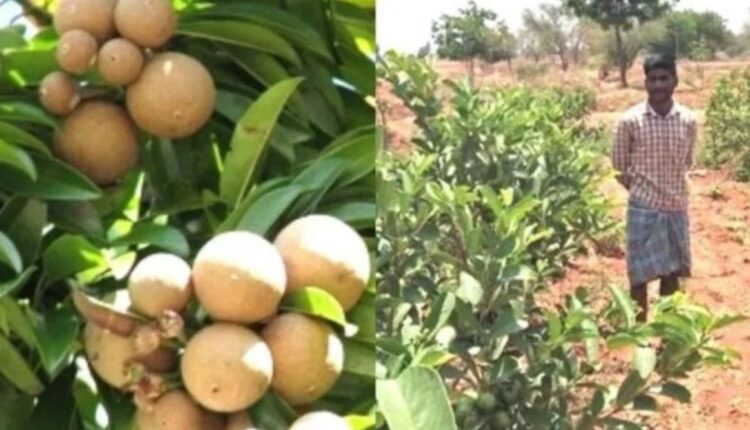What is the modern technique of Sapota Cultivation?
Sapota fruit takes 7-10 months to ripen, Good yield with proper management and irrigation
Chikoo is a very sweet and tasty fruit which is rich in carbohydrates, proteins, fats, fibre, minerals, iron and calcium. It is also being cultivated extensively in India, but its birthplace is considered to be Mexico and Central America. Farmers can earn good profit by cultivating Sapota. Chikoo is cultivated on a large scale in Kutch, Gujarat. Sapota is the second most cultivated fruit after mango and pomegranate. For successful cultivation of Chikoo, it is necessary for the farmers to have the right information from soil to climate.
What is the soil and climate required for Sapota cultivation?
Although chickoo can be grown in many types of soil, but deep fertile sandy loam soil is considered best for it. The pH level of the soil should be 6-8 and it is also important to have a good drainage system.
Sapota should not be cultivated in clayey soil and soil having high amount of calcium. It grows best in hot and humid climates. The optimum temperature for fruit development is 11 to 38 °C.How to sow?
July is the best month for transplanting saplings for sapota cultivation. Plant to plant distance of 8 meters and row to row distance of 8 meters should be kept at the time of transplanting. For sowing in sandy soil, dig pits of size 60 cm X 60 cm X 60 cm and fill it with cow dung manure, 3 kg single super phosphate and 1.5 kg muriate of potash and 10 gm phorate dust or neem empty pit. It is filled in April-May and after one month i.e. in June-July the plants should be transplanted.
Chickpea Varieties
Many advanced varieties of Sapota are popular, whose pulp is sweet and tasty. Cricket Bal, Kali Patti, Bhuri Patti, PKM-1, DSH-2 are among the improved varieties of Jhumkia Chikoo. The black leaf variety is grown in most parts of Gujarat.
Irrigation and Fertilizer Requirement
Sapota cultivation does not require irrigation in monsoon, but irrigation should be done at an interval of 7 days in summer season and 15 days in winter season. This brings fruits quickly. It is better to use drip system for irrigation. Manuring is essential for good growth of fruits. To get more yield, add 50 kg cow dung manure, 1000 grams Nitrogen, 500 grams Phosphorous, 500 grams Potash per plant per year.
Inter-cropping System in Chickpea Cultivation
With chikoo, you can grow income by inter-cropping seasonally such as pineapple, cocoa, tomato, brinjal, cauliflower, pea, pumpkin, banana and papaya.
How much production?
It takes 7-10 months for sapota fruit to ripen. Crops are obtained twice a year from January to February and again from May to July. 15-20 tonnes per hectare fruits can be obtained. The production capacity depends on the variety and maintenance.
Contact us: If farmers want to share information or experiences related to farming with us, then they can do this by calling us on the phone number 9599273766 or by writing an email to [email protected] or by sending your recording. Through Kisan of India, we will convey your message to the people, because we believe that if the farmers are advanced then the country is happy.



